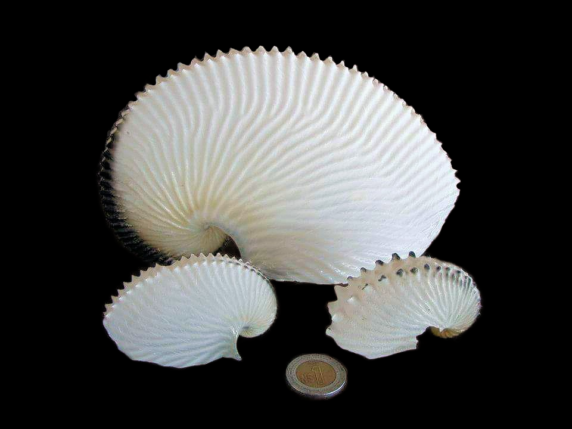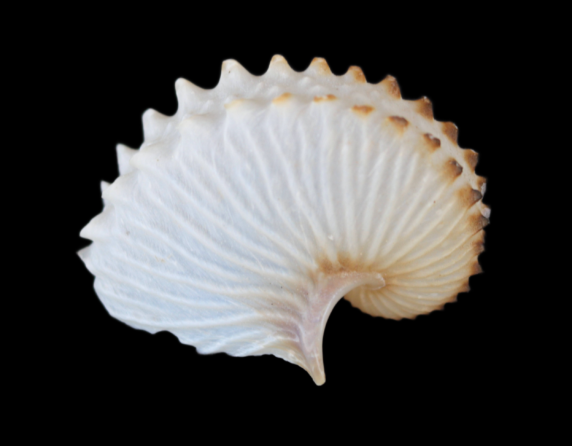Pacific Argonaut Shell, Argonauta pacificus
 Pacific Argonaut Shell, Argonauta pacificus. Collected off the beach in Los Barriles, Baja California Sur, December 2017. Larger shell size: 12.2 cm (4.8 inches) x 8.1 cm (3.2 inches). Collection courtesy of Mike Rousseau, Maple Ridge, British Columbia, Canada. First two photographs courtesy of Brad Murakami, Surrey, British Columbia, Canada.
Pacific Argonaut Shell, Argonauta pacificus. Collected off the beach in Los Barriles, Baja California Sur, December 2017. Larger shell size: 12.2 cm (4.8 inches) x 8.1 cm (3.2 inches). Collection courtesy of Mike Rousseau, Maple Ridge, British Columbia, Canada. First two photographs courtesy of Brad Murakami, Surrey, British Columbia, Canada.
 Pacific Argonaut Shell, Argonauta pacificus. Collected by a shallow-water diver in coastal waters off Los Barilles, Baja California Sur. Size: 17 cm (6.7 inches) x 11.6 cm (4.6 inches) x 6.0 cm (2.4 inches).
Pacific Argonaut Shell, Argonauta pacificus. Collected by a shallow-water diver in coastal waters off Los Barilles, Baja California Sur. Size: 17 cm (6.7 inches) x 11.6 cm (4.6 inches) x 6.0 cm (2.4 inches).
Pacific Argonaut, Argonauta pacificus (Dall, 1869), is a Cephalopod that is a member of the Argonautidae Family of Argonaut Shells, that is also known as the Greater Argonaut. The “shell” is compressed with an elliptical profile with two rows of small sharp tubercles along the narrow finely tuberculate-based keel and prominent ribs. They are more rounded than other species in the family having a depth that is 62% to 66% of its length. The shell is white colored with black along the oldest portion of the keel. They are octopus-like and dimorphic with separate sexes. The live animals have a blue sheen on the first pair of arms and around the eyes. They prey on the various jellyfishes. In turn they are preyed upon by numerous large fishes including dorado, marlin, sailfish, spearfish and tuna, as well as penguins and seals. Female Pacific Argonaut generate a calcareous egg chamber that resembles a shell that is the largest of the Argonaut’s can be up to 22.0 cm (8.7 inches) in length, 12.6 cm (5.0 inches) in height, and 6.3 cm (2.5 inches). These shells are thin, brittle. The males are about one-third the size of the females and do not have “shells”.
The Pacific Argonaut is a pelagic species that spends its entire life at, or near, the surface of the open sea, at depths up to 21 m (70 feet). They are vertical migrators that move to the shelter of the bottom at night and move toward the surface at night for feeding. They have eight tentacles, two of which are unique, and web-like, used to collect food. The male can be differentiated from the female by the existence of an altered third tentacle (the hectocotylus) that it keeps in a pouch until it is needed for reproduction. Following fertilization, the males die.
The Pacific Argonaut can be easily confused with the Noury’s Argonaut, Argonauta nouryi (smaller; elongated and longer than it is deep) and the Paper Nautilis, Argonauta cornutus (smaller; less elliptical; depth that is 55% to 59% of length).
The Pacific Argonaut considered to be on the rarest of the Argonauta species being found in all Mexican waters of the Pacific. These shells are prized and deemed to be of great interest and value to shell collectors.
A synonym is Argonauta argo.